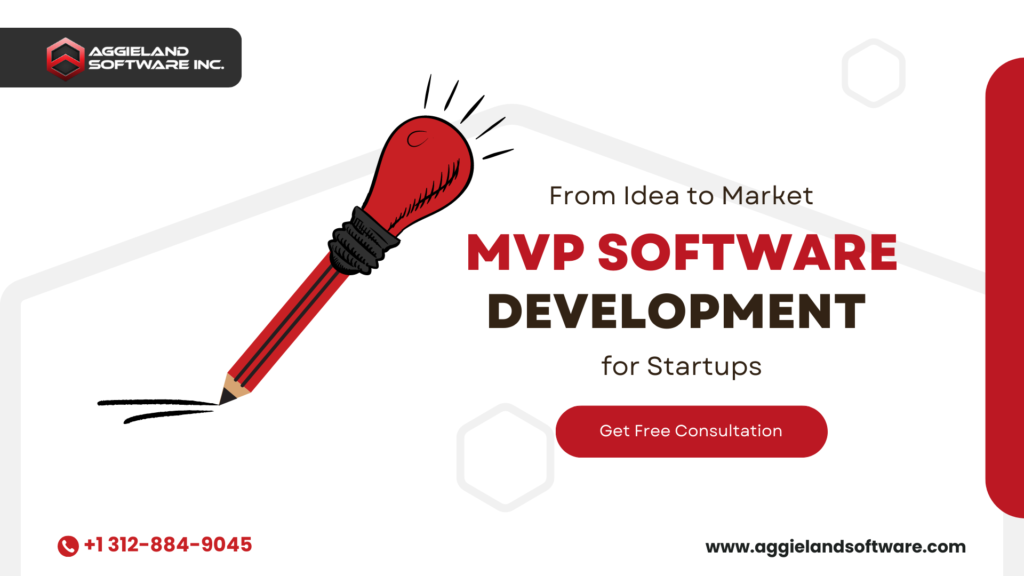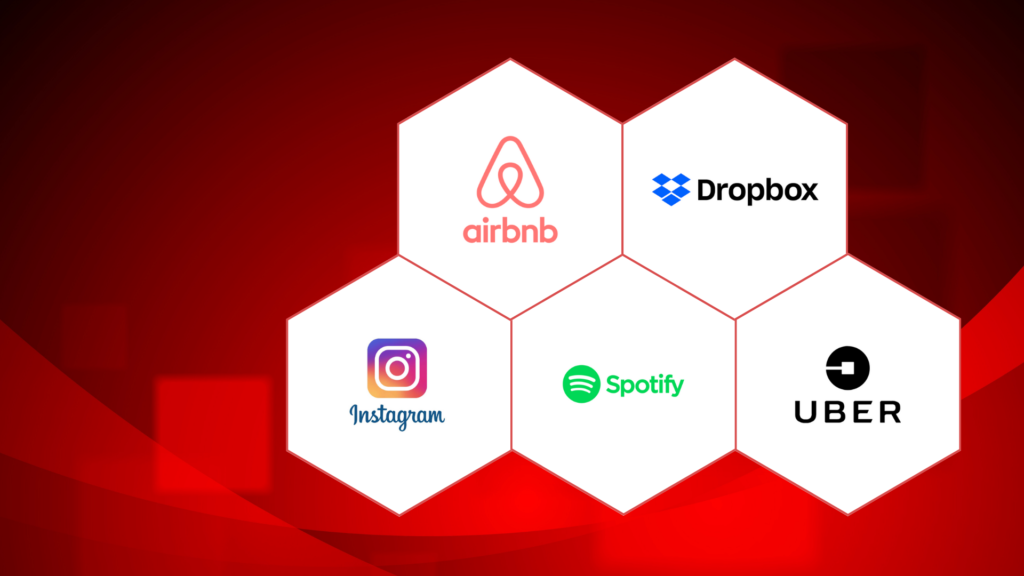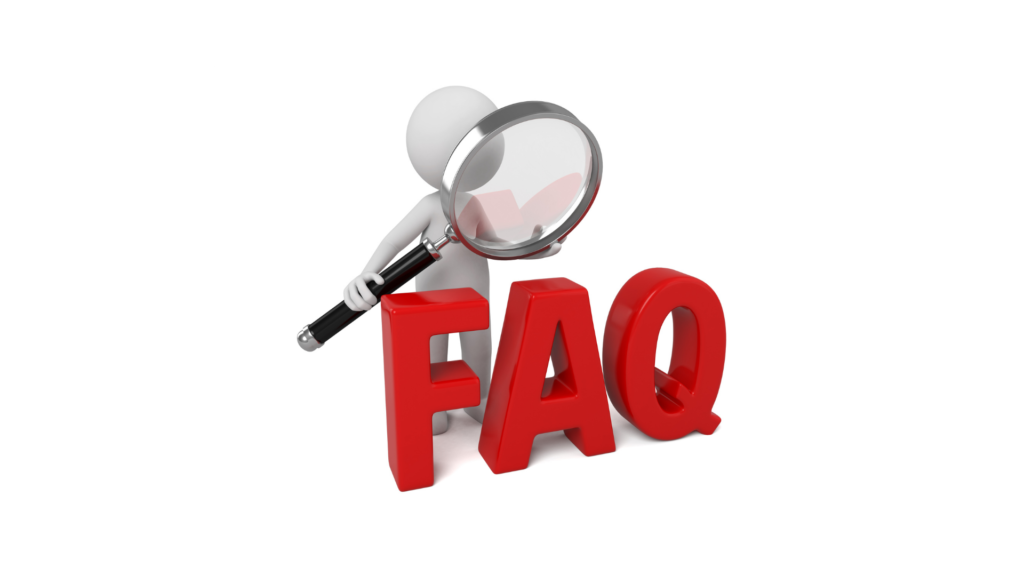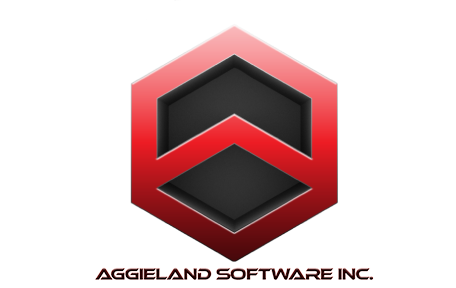From Idea to Market: MVP Software Development for Startups
Introduction

In the ever-evolving landscape of startups, turning a brilliant idea into a successful and marketable product is a formidable challenge. The journey from conception to market is fraught with risks, uncertainties, and resource constraints. This is where the concept of Minimum Viable Product (MVP) software development comes into play, offering startups a strategic approach to validate their ideas, minimize risks, and build a strong foundation for their business. In this blog, we will explore what a Minimum Viable Product is, its development process, the advantages it offers to startups, real-world examples of successful MVP implementations, and how Aggieland Software INC. provides innovative solutions to fuel startup growth.

1) What is a Minimum Viable Product?
A Minimum Viable Product (MVP) is a fundamental principle in product development where a basic version of a product is developed with just enough features to address the core problem it aims to solve. The MVP acts as a prototype, serving the purpose of testing the concept with real users and early adopters. Unlike a full-scale product, an MVP is designed to be developed and deployed quickly and cost-effectively, allowing startups to receive valuable feedback from the target audience. This feedback loop helps to refine the product, enhance its features, and align it with user needs and preferences.

2) MVP Development Process in Software Development for your IT Project
The process of MVP development in software development involves a systematic approach to ensure the product meets its core objectives. Here’s a breakdown of the steps:
a) Ideation: The process starts with ideation, where the startup team brainstorms ideas, identifies the target audience, and defines the problem the product will solve.
b) Feature Prioritization: The team identifies the crucial features that need to be included in the MVP. The key is to focus on the most essential functionalities that align with the product’s core value proposition.
c) Prototyping: A prototype of the MVP is built, encompassing the core features. This prototype serves as a basis for user testing and feedback collection.
d) Development: With a clear roadmap and prioritized features, the development team proceeds to build the MVP. Agile methodologies are often used to foster flexibility and adaptability during development.
e) Testing and Feedback: The MVP is released to a select group of early adopters and users to gather feedback. This iterative feedback loop helps to refine the product and identify areas for improvement.
f) Iteration: Based on the feedback received, the product is iterated upon, with additional features and improvements incorporated in subsequent versions.

3) Advantages of Starting with an MVP
Starting with an MVP offers several compelling advantages for startups:
a) Reduced Development Costs: Building an MVP requires fewer resources compared to a full-fledged product. This cost-effectiveness allows startups to allocate their limited funds more efficiently.
b) Faster Time to Market: The streamlined development process of an MVP ensures that the product reaches the market faster, giving startups an early advantage and an opportunity to seize market opportunities.
c) Validated Market Demand: By releasing an MVP to the target audience, startups can validate the demand for their product. This helps avoid building products that do not resonate with the market.
d) Continuous Feedback Loop: The iterative nature of MVP development allows startups to receive valuable feedback from real users, which drives product improvement and innovation.
e) Risk Mitigation: MVPs enable startups to assess the feasibility of their ideas in a low-risk environment, reducing the chances of investing in a product that may not be successful.

4) Minimum Viable Product Examples
Numerous successful companies have embraced the MVP approach and achieved remarkable success:
a) Airbnb: The founders of Airbnb initially launched a simple website offering air mattresses for rent to attendees of a high-demand conference. This MVP allowed them to validate the demand for their concept and paved the way for the revolutionary “Airbnb” we know today.
b) Dropbox: Dropbox began its journey by creating a video demonstrating the concept of cloud storage. This MVP approach helped them gauge interest and validate their idea before investing in full-scale development.
c) Instagram: The initial version of Instagram was a basic photo-sharing app with minimal features. The MVP helped the founders gather valuable feedback, leading to the addition of filters and other functionalities that made the platform a massive success.
d) Spotify: Spotify used a Minimum Viable Product (MVP) to cut costs and engage customers and producers. By prototyping early, launching only after meeting quality standards, and iterating based on user feedback, they grew to 100+ million paid and 200+ million monthly active users globally. Lean and agile principles guided their success.
e) Uber: Uber started with a beta app for founders and friends, focusing on San Francisco users for feedback. They iteratively refined the product, leading to a marketable taxi app. Today, Uber operates in 60+ countries, generating billions in revenue annually.

5) Frequently Asked Questions regarding MVP and how Aggieland Software INC. gives solutions
Q: How long does an MVP take to build?
A: The length of time to build any software depends on the complexity involved. But Aggieland Software’s proprietary development technology means that we are able to offer faster delivery timelines than any other development agency. The most complex MVP we’ve delivered took 3 weeks to develop but our average build time is 5 days.
Q: How does Aggieland Software INC. build MVPs so quickly?
A: We are the MVP experts and pride ourselves on offering the best MVP service to our clients. To deliver this, we’ve invested heavily in two areas of software development acceleration. Firstly, we’ve automated our project setup process which means that a task, which often takes development agencies weeks, is completed almost instantly for us. Secondly, we use our proprietary software development toolkit which enables our team to automate the development of standard MVP elements (such as login pages and user profiles).
Q: How much will my MVP cost?
A: As with any software product, the cost will be highly dependent on the complexity of the project. We do, however, pass on the benefits of our MVP process to our clients in price. Our price range generally sits between $4,000-$12,000, with our average price hovering between $7,000-$8,000.
Q: Do I own the code of my MVP?
A: Yes, you own 100% of the intellectual property for your MVP. Additionally, we will not disclose details of your project to any 3rd parties, unless specifically instructed to do so by you.
Q: Which countries does Aggieland Software INC. operate in?
A: Aggieland Software INC. builds MVPs for entrepreneurs all over the world, from Los Angeles to Madrid to Sydney. Aggieland Software INC. is a USA-based company, with a Software Development team based in Springfield, IL USA and the Sales functions based in Sunnyvale, CA USA. We will do outsource or offshore the development of your project with our preferred vendors to provide you with the best product possible.
Q: What’s Aggieland Software’s process for scoping and building MVPs?
A: Aggieland Software INC. operates a simple process for your MVP. We start with an Intro Call; this is an opportunity to speak candidly about the business idea and what the aims should be for the MVP. Then, if it seems like a good fit, we’ll have a Scoping Call where a member of the development team will join to discuss the technical considerations for the project including potential complexities and opportunities for the MVP. If you’re keen to proceed, we’ll provide you with a Scoping Document, Guaranteed Quote and Timeline.
Q: What happens after my MVP finishes?
A: When you have validated your concept through the MVP and want to move forward with a fully-fledged product, there are a number of routes you can go down. You can transition to Aggieland Software’s CTO-As-A-Service offering which will give you the benefits of having a co-founder while enjoying the technical expertise of our team. Alternatively, if you decide to move forward with another co-founder or organization, we are able to give you your codebase and assist you with the transition. You’ll never be tied in.
Q: How will my MVP be hosted and maintained?
A: As part of the Aggieland Software INC. ecosystem, we will host and maintain your MVP. We will also be on-hand for consultation about required updates and optimizations to your MVP.

Conclusion
Minimum Viable Product (MVP) software development is a game-changer for startups, offering a strategic approach to validate ideas, minimize risks, and bring products to market quickly and efficiently. By prioritizing essential features and embracing an iterative feedback loop, startups can make informed decisions and refine their offerings based on real user insights. The success stories of companies like Airbnb, Dropbox, and Instagram illustrate the power of MVPs in revolutionizing industries and achieving remarkable growth.
Aggieland Software INC., with its expertise in MVP development and streamlined processes, is at the forefront of empowering startups to turn their ideas into successful products. By providing efficient solutions, Aggieland Software INC. helps entrepreneurs navigate the challenges of product development, driving their businesses towards sustainable growth and success in the dynamic startup ecosystem. Whether it’s validating a concept, optimizing development timelines,

